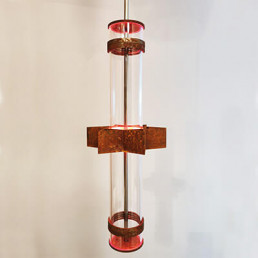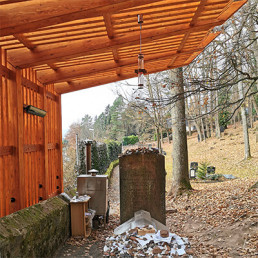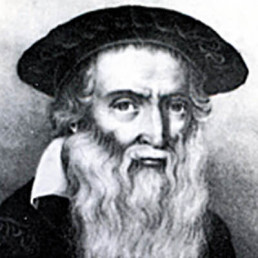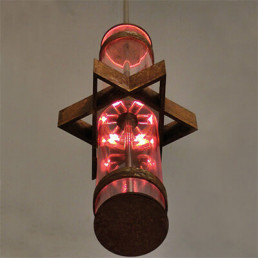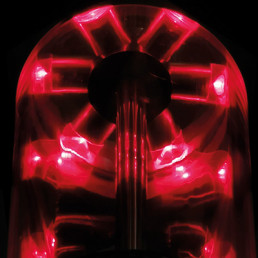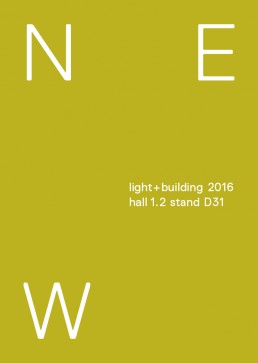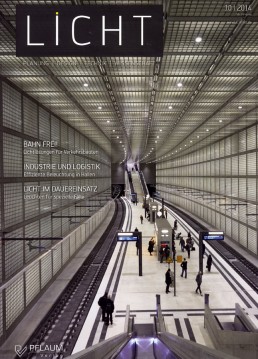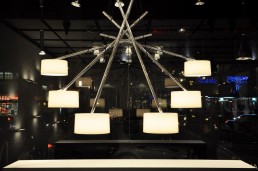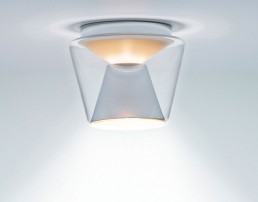Eternal light – Sacred lighting at the Jewish cemetery in Michelstadt
– a text by Manfred Wolf in LICHT 8/2023 –
The architectural office of Prof. Alfred Jacoby designed a canopy for the Jewish cemetery pilgrimage site in Michelstadt and entrusted serien.lighting with the realisation of the eternal light. Designed for this special place, a specially developed customised luminaire combines a glass tube with a Star of David and a housing made of Corten steel. The protected cultural monument is visited by Jews from all over the world.
Isac Löw Matthes Wormser, known as Rabbi Seckel Löb Wormser, was born in Michelstadt in 1768 as the son of a cloth merchant. In 1783, he went to a yeshiva – a Jewish college – in Frankfurt for five years to study, among other things, the Kabbalah, the mystical tradition of Judaism. Back in Michelstadt, he then ran his own yeshiva and gradually made a name for himself as a miracle healer – a Baal Shem. These healings were performed by mentioning the name of God, Bible texts, prayers and probably also amulets or rings.
BAAL SCHEM – CONNOISSEUR OF THE NAMES OF GODS
This reputation as Germany’s last Jewish miracle healer was cemented long after the death of Seckel Löb Wormser and still attracts a constant stream of visitors to his grave in the Jewish cemetery in Michelstadt. Sometimes up to 1,000 people gather there. In order to protect his legacy and grave, the State Association of Jewish Communities in Hesse therefore decided to erect a protective roof over the burial site. The office of Prof. Didi. Architect Alfred Jacoby from Frankfurt, who has since made a name for himself in Germany with many newly built synagogues. These include buildings in Darmstadt, Heidelberg, Aachen, Kassel, Chemnitz and currently Dessau. The company serien Raumleuchten GmbH, based in Rodgau near Frankfurt with its two founders and designers Jean-Marc da Costa and Manfred Wolf, has been a constant companion over the years when it comes to the design and realisation of special ritual objects involving the theme of light. Thus, chandeliers, annual lights (which are lit on the anniversary of a person’s death),
menorahs (seven-branched candlesticks – one of the most important religious symbols of Judaism) and eternal lights were designed and produced.
ETERNAL LIGHT
In both Catholic churches and Jewish synagogues, light symbolises the connection with God and his constant presence.
Among other things, it goes back to God’s commandment to Moses to keep a perpetual light shining in the Tent of the Covenant, which housed the tablets of the Ten Commandments during the wilderness journey from Egypt to the Promised Land. The eternal light is left shining at burial sites as a sign of resurrection and eternal life. It gives hope and comfort, especially in the dark season. It connects the here and now with the hereafter. Even in ancient Egypt and the Roman Empire, funeral lanterns were an indispensable part of mourning ceremonies. They were intended to light the way for the souls on their journey to the light.
NER TAMID – THE HEBREW WORD FOR ETERNAL LIGHT
The commemoration of the Baal Scher in Michelstadt was also to be characterised by such a light. What was needed was a design that matched the modern roofing by the architecture firm of Prof. Alfred Jacoby and at the same time harmonised with the important pilgrimage site and the grave. As was customary in synagogues from earlier times, a suspended design was chosen. The choice of light was understandably in favour of a long-lasting and energy-efficient light source of our time: LED.
TIMELESS MATERIAL
In a way, the design quotes the flag of Israel. A central Star of David, which is located in the middle of two ribbons and stands as a symbol for Judaism. The star contains six lights inside, which glow red and symbolise the blood covenant with God. This Star of David is made of Corten steel, which protects itself from further corrosion with a dense barrier layer of sulphates and phosphates under the actual rust layer. An ideal material that, in addition to a timeless patina that seems appropriate for the location, nevertheless has a durable materiality. This steel is then also used for the two rings and the ends of the glass tube. To prevent glass breakage due to adverse conditions, the tube is made of UV-resistant clear acrylic. As this material has a relatively high coefficient of expansion compared to pure glass, it was buffered and sealed to the steel with rubber rings.
A stainless steel tube was chosen as the pendant, in which the cable duct of the easily accessible control gear located in the canopy is located. A spring-loaded connection was chosen between the tube and the canopy, which can withstand wind and weather as well as other influences.
MEANINGFUL RESTING PLACE
The canopy was inaugurated in July this year in a small circle. As previously mentioned, there will be larger crowds on the anniversary of Seckel Lob Wormser’s death, 13 September, which, according to the Jewish calendar, can also fall on another date close to the anniversary of his death. On this day, prayers are said at the grave, read from the Torah or small stones are placed on the grave, under which there are also notes with wishes or requests. According to traditional Jewish belief, these wishes are taken to heaven by the deceased, who returns to their resting place, especially on the day of death, to present their wishes to the highest authorities.
It is hoped that the light of the Ner Tamid will also find its way into eternity.

